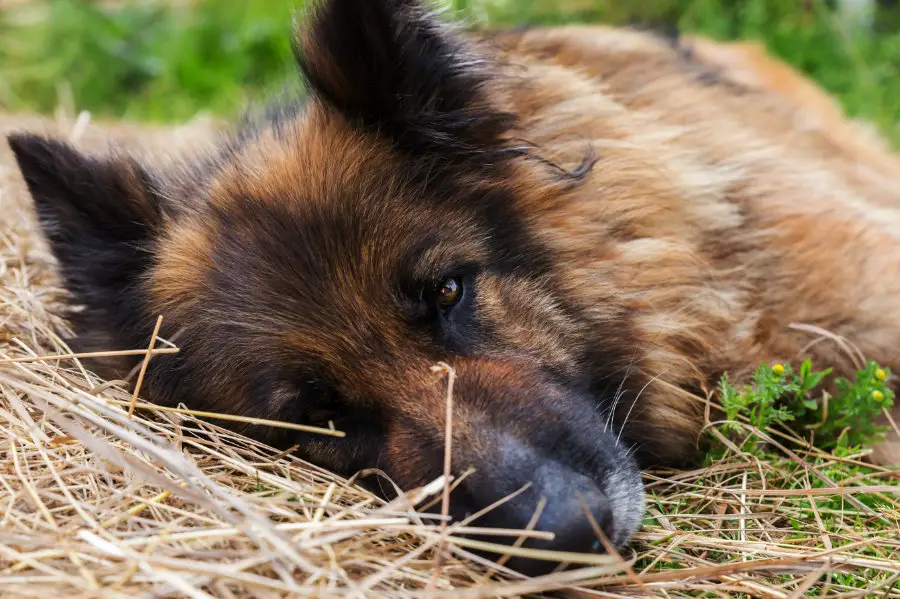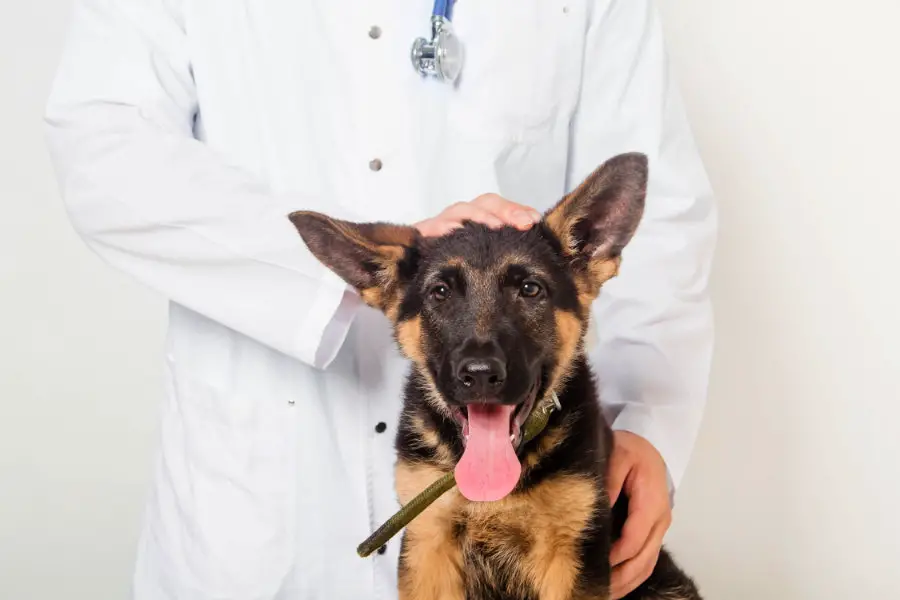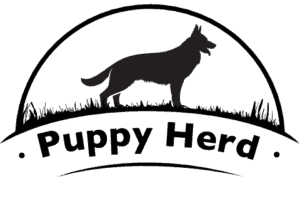As a dog owner, there are plenty of conditions or illnesses your dog may run into that you should be aware of. While some of the conditions may be rarer or vary across different breeds, it’s important to educate yourself on the matter regardless.
Any breed of dog can get lockjaw, but large breeds such as the German Shepherd may be more susceptible to the condition. While lockjaw in dogs is rare, it can be brought on by certain bacteria entering an open wound. Signs of lockjaw include swelling of the face, drooling, and muscle stiffness.
We’ll explore how exactly your German Shepherd can contract lockjaw, as well as how to avoid it and treat it if you feel your dog has become infected.

What Causes Your German Shepherd To Get Lockjaw?
Lockjaw occurs when a bacteria known as Clostridium tetani enters your dog’s open wound. While lockjaw, also known as tetanus, is rare, it’s important to be mindful of this condition if your dog has recently been injured.
This bacteria can be found in some soils, but the chances of your German Shepherd acquiring lockjaw through certain soils is rare. It can also be found on the dirt of rusty metal, so if a rusty fence has recently injured your dog, this is something to consider.
Certain feces can also hold this bacteria, so this is another way that your dog may become infected. What may surprise many dog owners is that the bacteria itself isn’t harmful, but the toxin that this bacteria produces is what really harms your animal.
This toxin, known as tetanospasmin, forms when introduced to settings that are free of oxygen, such as inside a wound. This toxin can severely affect your dog’s nervous system, so if you suspect your dog has lockjaw, you must speak to your veterinarian as soon as possible.
Larger breeds such as the German Shepherd are more likely to get lockjaw, so it’s important to pay attention to the signs.
Signs Your Dog May Have Lockjaw
While lockjaw in dogs is quite rare, it can be serious when it occurs, so it’s important to look out for the signs. It’s important to note that your dog may begin showing signs of lockjaw in the following days, if not weeks after they’ve become infected.
By this time, your dog’s injury may have healed, so you may be left wondering what’s wrong with your pup. These are some of the most common symptoms of lockjaw or tetanus you may notice.
Muscle Stiffness
One of the most common signs is muscle stiffness. This will usually occur near or right where your dog’s injury or wound was, so it’s important to be mindful of that. (Source)
If you notice your dog walking stiffly or walking differently than usual, it’s important to speak to a veterinarian as soon as possible. Muscle tremors are also a common sign of tetanus, so this is another similar symptom to look out for.
While some dogs may experience more localized lockjaw, which occurs near their injury, some may suffer from generalized tetanus, affecting different areas of the body. It’s important to pay attention for the well-being of your dog. (Source)
Excessive Drooling
Another symptom is excessive drooling. When your dog has contracted tetanus, your he may not be able to fully open his mouth, which can result in hypersalivation. (Source)
If you feel as if your German Shepherd is drooling more than usual, it’s crucial to see if they appear to have a hard time moving their jaw or mouth. There will be clear signs that will show you that their mouth or jaw is in pain, such as being unable to eat or drink properly.
Once again, it’s important to contact your veterinarian as soon as possible if you notice that your dog has begun showing one or more of these symptoms.
Difference In Body Language
If you notice a difference in your dog’s body language, this is another symptom of lockjaw that you should be on the lookout for. Common indicators that your dog may be in some pain due to lockjaw include stiffening of their tail, rigid legs, and unusual facial expressions.
Factors such as these will allow your dog to communicate to you that they may be in some pain. If you notice any of these symptoms, you must contact your vet to ensure a proper diagnosis of lockjaw can be made if that’s the problem.
Once a diagnosis has been made, your dog can easily begin treatment and be on their way to recovery. Below, we’ll explore how you can properly treat your dog’s lockjaw, as well as what else you may need to know about this condition.

Treatment Of Your Dog’s Lockjaw
If you feel your dog is suffering from lockjaw, it’s essential to your pet’s health and well-being that you contact your local veterinarian as soon as possible.
While you may not be able to make a diagnosis yourself when it comes to your dog’s condition, a professional will be able to tell you without a doubt whether your dog has come down with lockjaw.
Your Vet Will Administer An Antitoxin
Once your veterinarian has officially given your pup a diagnosis of lockjaw, they will begin administering an antitoxin that will stop tetanus in its tracks. If necessary, your vet may prescribe you other antibiotics to keep your dog calm and comfortable throughout the process. (Source)
If your dog has been unable to properly drink or eat while dealing with lockjaw, they will ensure your pup gets all the necessary fluids they need through an IV.
Observe Your Pet’s Condition Afterwards
Once your dog has been put on the proper antibiotics, it’s crucial to watch over their condition to ensure that they improve health-wise. In certain cases, hospitalization may be necessary, so this is something to be mindful of.
No matter where your dog is in terms of their battle with lockjaw, they can easily make a speedy and healthy recovery with the right treatment and aftercare. It’s important to be watchful of your dog’s condition even after they have received the correct care to ensure none of their previous symptoms begin resurfacing.
Ensure that your pet is comfortable and kept in a stable environment for at least a week after treatment, especially if hospitalized. Remembering all these components will ensure the health and safety of your dog while they recover.
